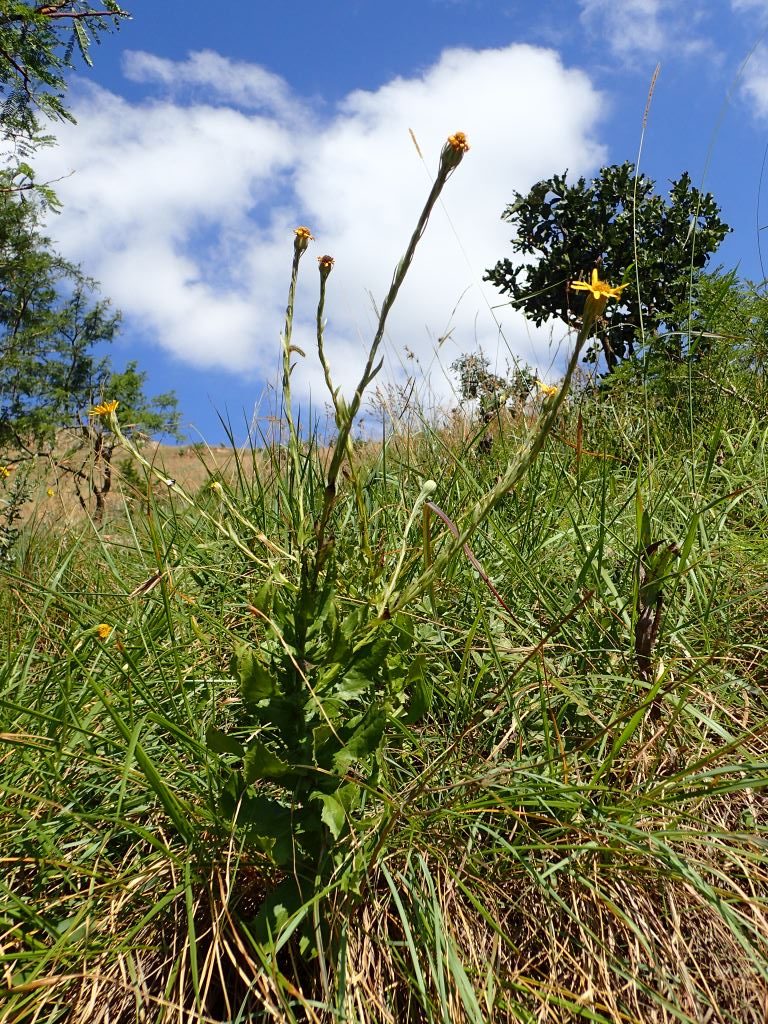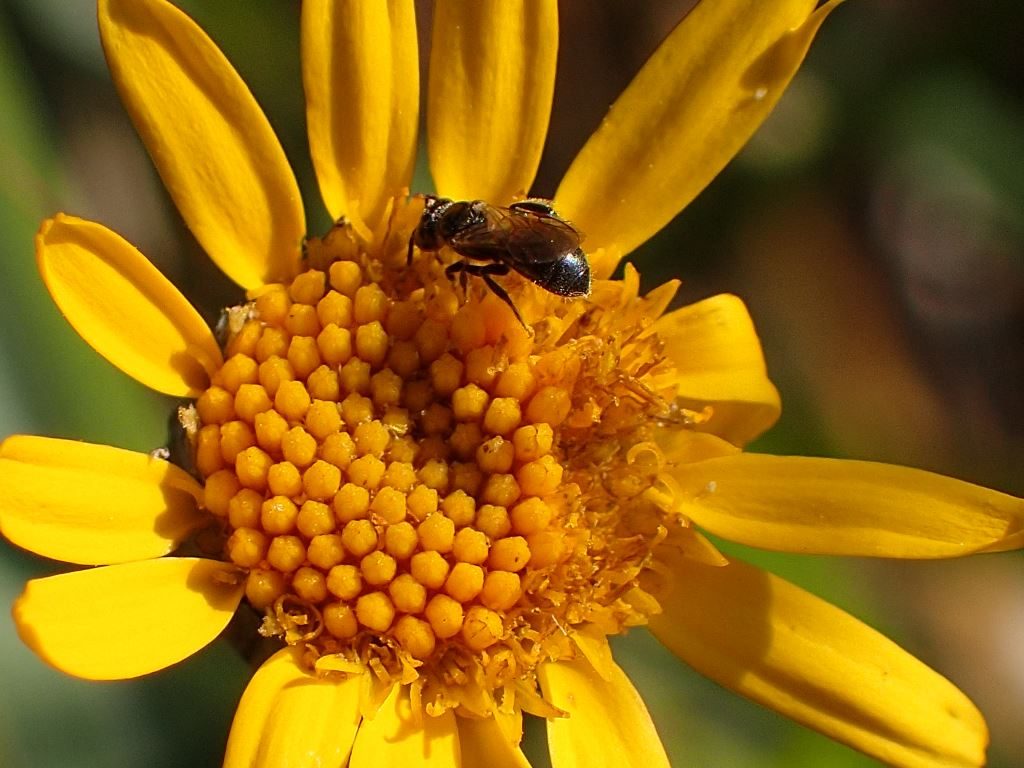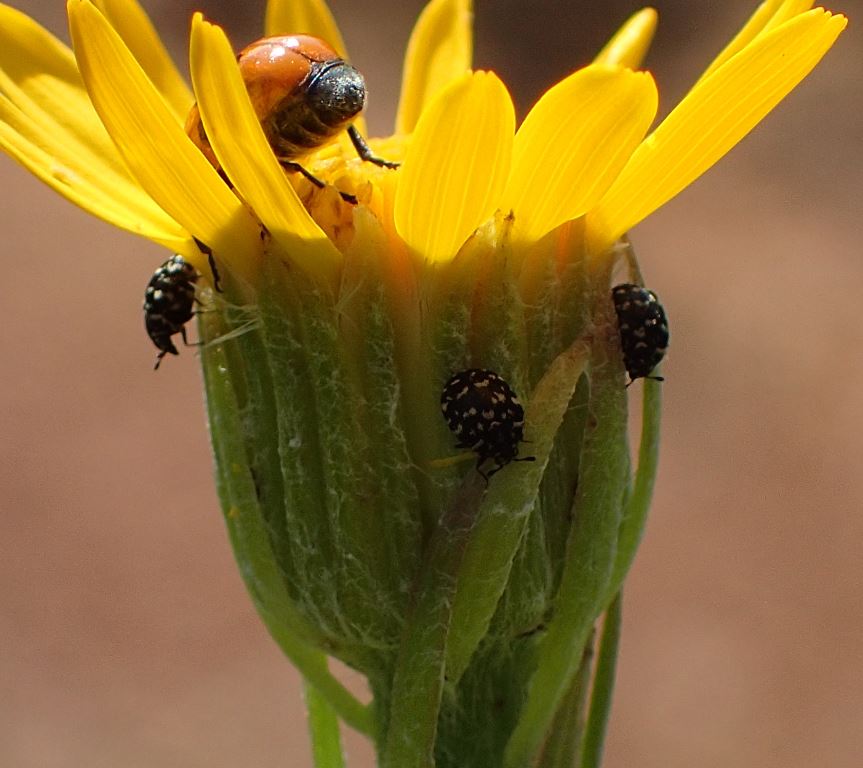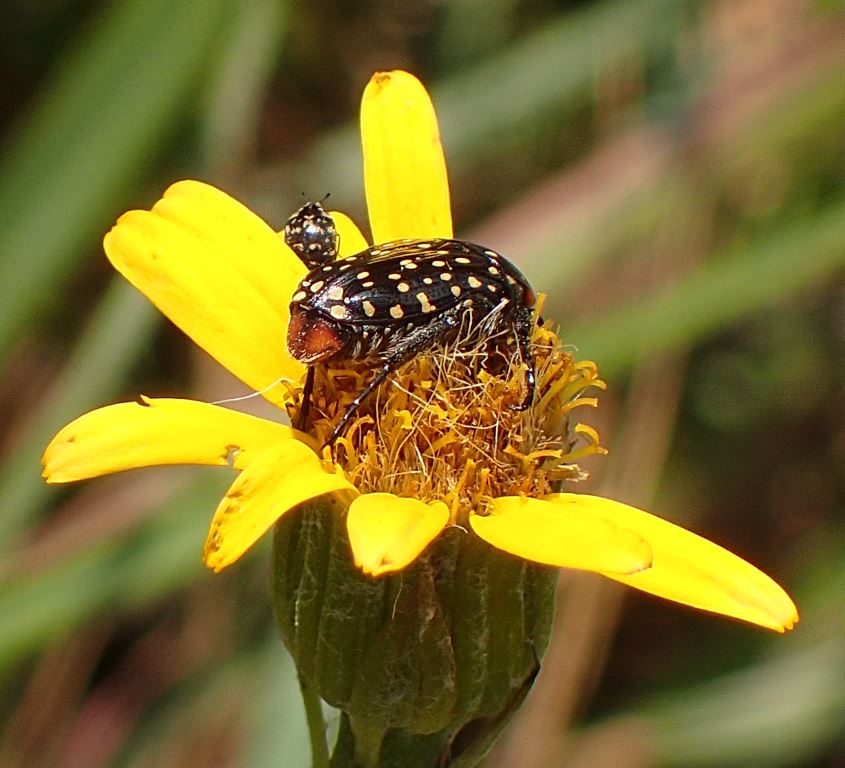
Senecio triodontiphyllus in its natural habitat
Expect the unexpected is an appropriate description for two new localities for Senecio triodontiphyllus C. Jeffrey – one in Mountainlands Nature Reserve, Barberton and the other on Wits University’s Pullen Nature Reserve in the Crocodile Gorge Mountains. One may think that the “special” plants always grow in some remote, inaccessible corner and not right under one’s nose in regularly traversed areas. With several herbaceous species sporting yellow, daisy like flowers in the grasslands and wooded grassland one would normally not blink twice when looking at them. But this chap stands out due to its interesting architecture – large, sweetly scented leaves with double serrated margins growing from its base and inflorescences on long stems at the top.
The first collection of this species was made by botanist and banker Ernest Galpin back in 1890 and it was given the name Senecio trifurcatus Klatt which was subsequently changed. According to the Red List of South African Plants it was known from three collections made before 1930. It was rediscovered in 2008 at one of the historical locations and again in the north of Mountainlands Nature Reserve in 2012. It was collected in March 2013 in the Crocodile Gorge Mountains making it the first discovery for that area of which the details can now be added to the range in which it occurs. The 2018 discovery in Mountainlands makes it the second locality in the reserve for this species endemic to the area between Barberton and Kaapmuiden. Endemic means it occurs nowhere else in the world.
Senecio triodontiphyllus is classified as Vulnerable (VU). So what does it mean? Threatened species are divided into different categories according to national assessments and this information is contained in the Red List of South African Plants. Vulnerable means that the available evidence indicates that the plant is facing a high risk of extinction as it meets at least one of five IUCN criteria that are used for defining its status. Adding the two new localities is good news for this special plant in need of protection.
Below follows photos of insects and ectoparasites (ticks) making the most of the inflorescences.

Ticks probably waiting patiently for a mammal to brush against the bracts

A small wasp sipping nectar from the disk flowers

Coleoptera heaven

A fruit chafer beetle on top of disk flowers
